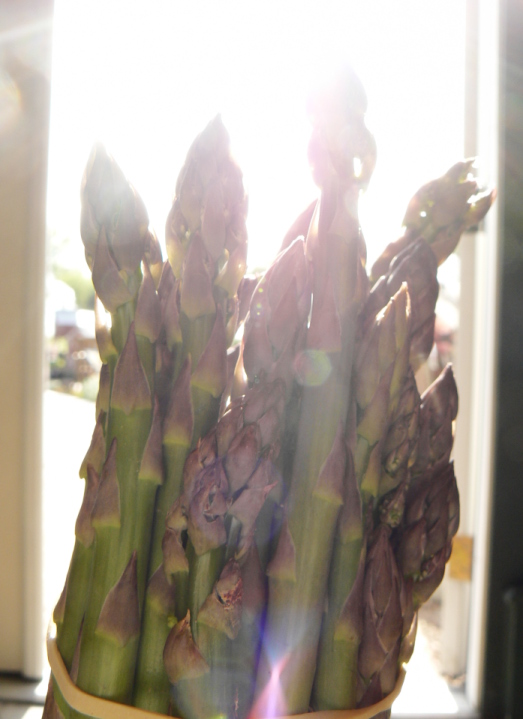History and Nutrition
The brief season of our first vegetable is full of enthusiastic fans, and for good reason! Asparagus has been enjoyed as far back as 3000 B.C, as documented in an Egyptian frieze. Beloved by kings, early physicians, and ancient epicureans alike, asparagus has a lot to offer the modern vegetable eater! 4-5 grams protein and 3 grams of fiber per cup, an excellent source of folic acid and a very good source of vitamins B1, B2, B3 and B6, not to mention it's high rating on a scale of deliciousness. Grilled, satueed, steamed, boiled, roasted, or broiled asparagus is delicious with just about anything. Beef, chicken, eggs, salads, pasta... The flavor of asparagus pairs especially well with garlic, rosemary, tarragon, thyme and lemon.
Try this simple recipe!
- Cut 1 pound of fresh, rinsed, Kirbygrown asparagus into even pieces.
- Heat 1 Tablespoon of olive oil in a pan on medium.
- Add one clove of fresh, minced garlic and saute briefly, then toss in your asparagus.
- Cover and cook for 5-10 minutes, stirring now and then, until the asparagus is crisp tender. (My asparagus of medium thickness was done in 8 minutes.)
- Sprinkle with 1/4 tsp salt or to taste, and serve! I recommend a garnish of chive flowers or purple violas.
Variation: Toss with the juice of 1/2 a lemon.
Storage and Peparation Tips:
- It's best to use asparagus within a few days of purchasing to get full flavor and nutritional benefits.
- To store asaparagus, wrap the ends in wet paper towel and then put the entire bunch in a plastic bag. You want to contain a little moisture so the stalks don't get dried out.
- Asparagus loves growing in the sandy soil of our Ridge Road farm, so make sure you rinse it well to avoid crunching on grains of sand.
- Break off the white woody end before cooking to remove the fibrous part of the plant that grows under the soil.
More recipes to come!


